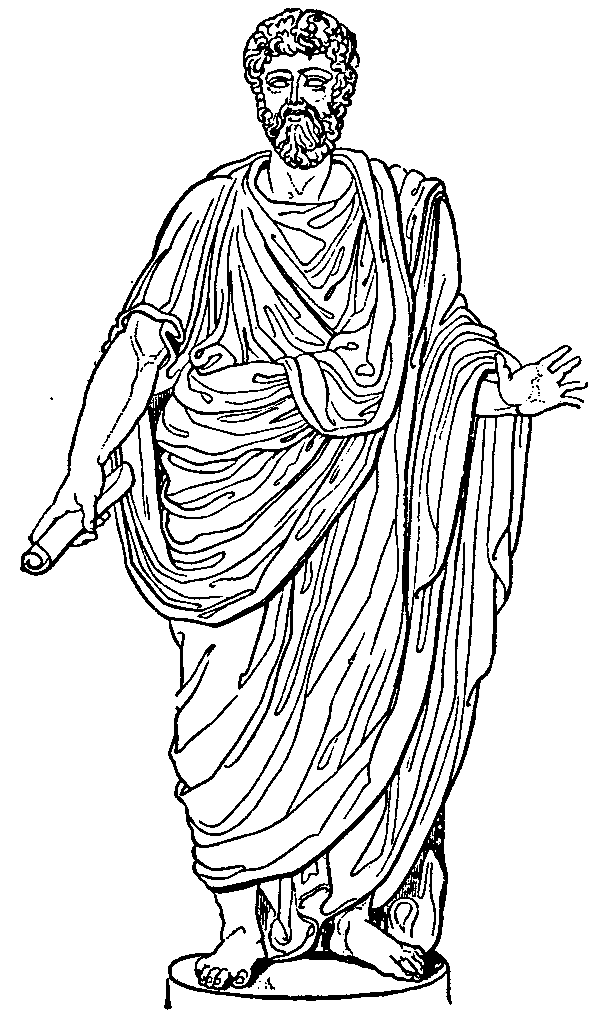|
Dictionary: Search the Dictionary Browse the Dictionary |
|
Timeline: Launch Interactive Timeline |
| Return to Front Page |
| TOGA | |
| The distinctive garb of the Roman citizen when appearing in public (see cut). Its use was forbidden to exiles and to foreigners; it was indispensable on all official occasions, even in imperial times, when more convenient garments had been adopted for ordinary use. It consisted of a white woollen cloth of semicircular cut, about five yards long by four wide, a certain portion of which was pressed by the fuller into long narrow plaits. This cloth was doubled lengthways, not down the centre, but so that one fold was deeper than the other. It was next thrown over the left shoulder in such a manner that the end in front reached to the ground, and the part behind was about twice a man's height in length. This end was then brought round under the right arm, and again thrown over the left shoulder so as to cover the whole of the right side from the arm-pit to the calf. The broad folds in which it hung over were thus gathered together on the left shoulder. The part which crossed the breast diagonally was known as the sinus, or bosom. It was deep enough to serve as a pocket for the reception of small articles. In earlier times the Romans wore the toga even in warfare, although one of considerably less width. It was worn on such occasions in a peculiar mode called the cinctus Gabinus (or girding in the Gabian manner, after the town Gabii). In this, the end which, in the other mode, was thrown over the left shoulder, was drawn tightly round the body, so that in itself it formed a girdle, leaving both arms free and preventing the garment from falling off. This garb was subsequently retained only for certain ceremonial rites, as at the founding of towns, at the ambarvalia, during incantations, at the opening of the temple of Janus, and at sacrificial observances of diverse kinds. After the sagum had been introduced as a military garment, the toga served as the exclusive garb and symbol of peace. Women also in olden times used to wear the toga: afterwards this was only the case with prostitutes; and disgraced wives were forbidden to wear the stola, the matron's dress of honour. The colour of the toga, as worn by men (toga virilis), was white: a dark-coloured toga (brown or black, toga pulla or sordida) was only worn by the lower classes, or in time of mourning, or by accused persons. A purple stripe woven in the garment was the distinctive mark of the curule magistrates and censors, of the State priests (but only when performing their functions), and afterwards of the emperors. This, which was called the toga proetexta, was also worn by boys until they attained manhood, and by girls until marriage. The toga picta was a robe adorned with golden stars; it was worn by a general on his triumph, by the magistrate who was giving public games, in imperial times by consuls on entering office, and by the emperor on festal occasions. On the toga candida, see |
|
|
|
|
| Pictures and Media | |
| ROMAN CLAD IN THE TOGA. |

|
|
Copyright 2000-2020 Peter T. Struck. No portion of this site may be copied or reproduced, electronically or otherwise, without the expressed, written consent of the author. |